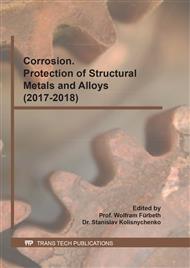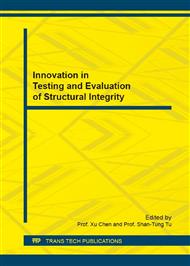p.419
p.425
p.431
p.436
p.441
p.449
p.453
p.458
p.463
A Comparative Study on the Wear and Corrosion Resistance of Coatings
Abstract:
The vessel containing sulfur particles has been found failing due to the effect of corrosion and erosion by the sulfur particles. Several coatings, including zinc-aluminum coating, wear-resistance painting and two kinds of polymer, have been provided to resist the negative influence of sulfur in the present study. The wear and corrosion resistance of the selected coatings has been measured to study the performance difference. Impact test has also been done to investigate the bonding condition of coatings under the impact or bending load. The microstructure of coatings before and after wear test is observed by the Optical Microscope (OM) and Scanning Electron Microscope (SEM). The experiment results reveal that one of the polymer coatings shows the best performance in the corrosion resistance, another polymer coating’s wear resistance is better than others. The coatings are bonded well with the substrate except the zinc-aluminum coating. The performance of painting is ordinary in this investigation.
Info:
Periodical:
Pages:
441-445
Citation:
Online since:
September 2016
Authors:
Price:
Сopyright:
© 2017 Trans Tech Publications Ltd. All Rights Reserved
Share:
Citation:



